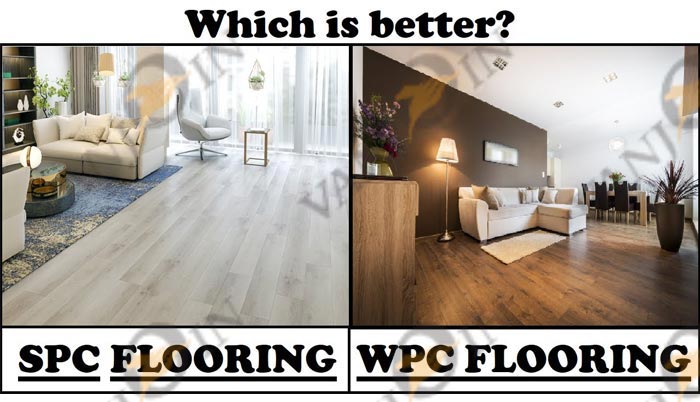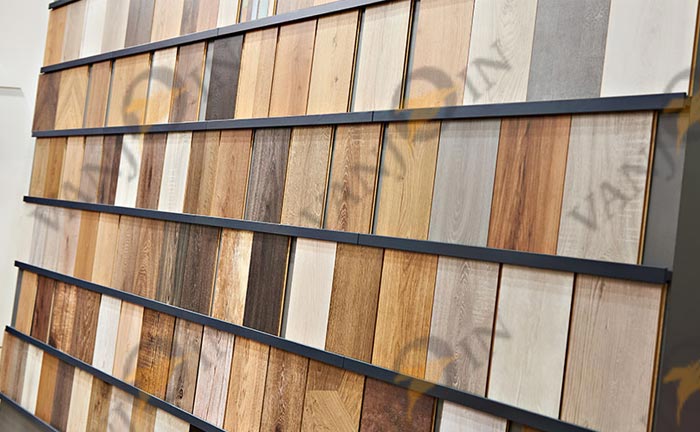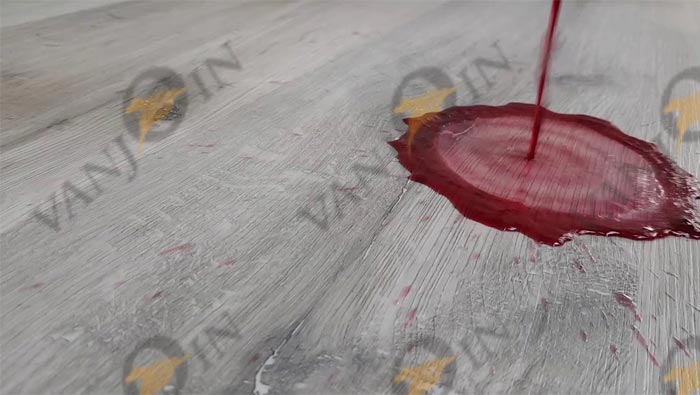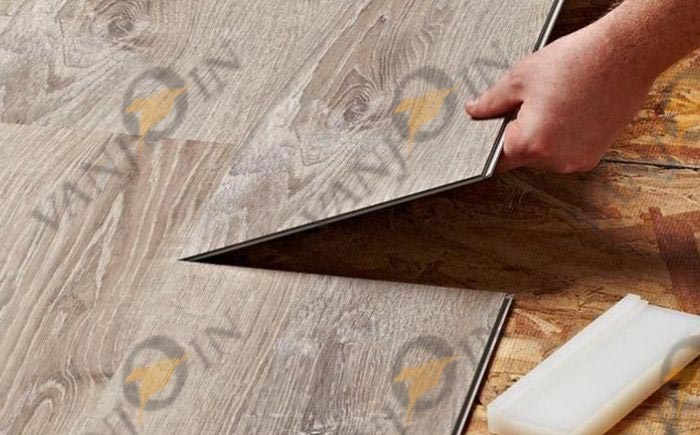Welcome to VANJOIN. Your satisfaction is our biggest pursuit.
Thanks to new technology, the options and possibilities luxury vinyl flooring offers to designers continue to expand. One of the latest luxury vinyl products is rigid core luxury vinyl flooring, which is a type of luxury vinyl flooring comprised of a more solid or “rigid” core for added durability. Rigid core luxury vinyl is a glueless format with a click locking installation system.
Two types of rigid core luxury vinyl are Stone Plastic Composite (SPC) and Wood Plastic Composite (WPC). When it comes to SPC vs. WPC flooring, it is important to note that while both share a variety of traits, there are differences between the two that should be considered when deciding which will work best for your space or interior design project.
SPC, which stands for Stone Plastic (or Polymer) Composite, features a core that is typically comprised of around 60% calcium carbonate (limestone), polyvinyl chloride and plasticizers.
WPC, on the other hand, stands for Wood Plastic (or Polymer) Composite. Its core typically consists of polyvinyl chloride, calcium carbonate, plasticizers, a foaming agent, and wood-like or wood materials such as wood flour. Manufacturers of WPC, which was originally named for the wood materials it was comprised of, are increasingly replacing the various wood materials with wood-like plasticizers.
The makeup of WPC and SPC is relatively similar, though SPC consists of far more calcium carbonate (limestone) than WPC, which is where the “S” in SPC stems from; it has more of a stone composition.
In order to better understand the similarities and differences between SPC and WPC, it is helpful to look at the following quantifiable qualities: Look & Style, Durability & Stability, Applications, and Cost.

Look & Style
There is not much difference between SPC and WPC in terms of what designs each one offers. With today’s digital printing technologies, SPC and WPC tiles and planks that resemble wood, stone, ceramic, marble, and unique finishes are easy to produce both visually and texturally.
Aside from design options, recent advancements have been made regarding different formatting options. Both SPC and WPC flooring can be made in a variety of formats including wider or longer planks and wider tiles. Multi-lengths and widths of either packaged in the same carton are also becoming a popular option.

Durability & Stability
Similar to dryback luxury vinyl flooring (which is the traditional type of luxury vinyl that requires an adhesive to install), SPC and WPC flooring are comprised of multiple layers of backing that are fused together. However, unlike dryback flooring, both flooring options feature a rigid core and are a harder product all around.
Because SPC’s core layer is comprised of limestone, it has a higher density in comparison to WPC, though is thinner overall. This makes it more durable compared to WPC. Its high density offers better resistance from scratches or dents from heavy items or furniture being placed on top of it and makes it less susceptible to expansion in cases of extreme temperature change.
One important thing to note is that although SPC and WPC are often marketed as being waterproof, they are actually water resistant. Though neither product is entirely waterproof if submerged underwater, topical spills or moisture should not be an issue if properly cleaned in a reasonable amount of time.

Applications & installation
Rigid core products including WPC and SPC were originally created for commercial markets because of their durability. However, homeowners have started using rigid core as well because of its ease of installation, design options and durability. It is important to note that some SPC and WPC products vary from commercial to light commercial use, so it is best to always consult your manufacturer to know which warranty applies.
Another highlight for both SPC and WPC, aside from their easy-to-install click locking system, is that they do not require extensive subfloor prep prior to installation. Though installing over a flat surface is always a good practice to be in, floor imperfections like cracks or divots are more easily hidden with SPC or WPC flooring due to their rigid core composition.
And, when it comes to comfort, WPC is generally more comfortable underfoot and less dense than SPC due to the foaming agent it is typically comprised of. Because of this, WPC is especially well suited for environments where employees or patrons are constantly on their feet.
In addition to offering more cushion when walking, the foaming agent in WPC provides more sound absorption than SPC flooring does, although many manufacturers offer an acoustic backing that can be added to SPC. WPC or SPC with acoustic backing are ideal for settings where noise reduction is key such as classrooms or office spaces.

Cost
SPC and WPC flooring are similar in price, though SPC is typically slightly more affordable. When it comes to installation costs, both are comparable overall since neither requires the use of an adhesive and both are easily installed with their click locking system. In the end, this helps to reduce installation time and costs.
In terms of which product is better overall, there isn’t one clear winner. WPC and SPC have many similarities, as well as a few keys differences. WPC may be more comfortable and quieter underfoot, but SPC has a higher density. Choosing the right product really depends on what your flooring needs are for a particular project or space.
If you found this comparison of SPC vs. WPC flooring helpful, you can find more information on our blog, including posts comparing luxury vinyl to other flooring products.
Feel free to contact us to find out more about why VANJOIN has become the leader in unparalleled designs and industry-leading durability. We would love to work with you on your next project.
Got a question, comment or business enquiry? We are always happy to hear from you.